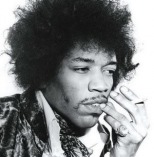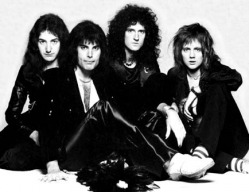Punk and the Future

After the initial British Invasion, American rock made a comeback with the likes of Jimmy Hendrix and much later folk hero Bob Dylan. However, 1970’s Britain once again became prime atmosphere for new styles of rock and national success. Bands like Led Zeppelin rode the wave of new money in the music industry and a rallying cry of “Sex, drugs, and rock and roll” across the Atlantic (7). They built off a then blossoming blues scene in Britain influenced by the use improvisation and an emphasis on musical technique. British blues had grown off African American influences following the war, but took a longer time to make back into the American market. Many famous bands were labeled as electric British Blues during their early years such as the Rolling Stones, The Animals, and The Yardbirds (10).

Moving beyond British blues, progressive rock sprung up in Britain as technology began to allow for grand instrumentation and a new British art movement sparked interest in theatrical presentation (11). It embodied the blues and jazz’s emphasis on technique and creativity over making music purely for the general population’s entertainment. Additionally, prog rock tried to revive some classical influence such as Bach or Mozart and reintegrate musical theory, which was largely lost in early amateur rock and roll (11). Some acts like Pink Floyd and Genesis reached widespread popularity in America (11). Finally, the political and socioeconomic setting of Britain in the mid-seventies made the spread of glam and punk rock a cultural phenomenon that would once again produce some of the best known bands in history. Glam built upon the theatrics of progressive rock, but contrasted complex pieces with simpler arena rock anthems. The tendency for glam artists to dress in ways that challenged the sexual norms of Western culture made it a musical form that prospered mostly in British society (12) Queen and T. Rex used Glam rock to create songs that challenged popular culture ideas like “Killer Queen.” Freddy Mercury described the song as “it's about a high class call girl. I'm trying to say that classy people can be whores as well” (13). Glam rock died out quickly because of its revolutionary challenges on society’s sexual norms. Nevertheless, it strongly influenced the punk rock and eventually American hair metal scene (12).
(7)- Friendlander, Paul. Rock and Roll: A Social History. Boulder: Westview, 1996. Print.
(10)- R. F. Schwartz, How Britain Got the Blues: the Transmission and Reception of American Blues Style in the United Kingdom Aldershot: Ashgate, 2007. Print.
(11)- "A Brief History of Progressive Rock - Guitar Noise." Guitar Noise - Learn How to Play Guitar. Web. 26 Apr. 2010. <http://www.guitarnoise.com/lesson/brief-history-of-progressive-rock/>.
(12)- Allmusic. Web. 26 Apr. 2010. http://www.allmusic.com/cg/amg.dll?p=amg&sql=77:388.
(13)- "Killer Queen by Queen Songfacts." Song Meanings at Songfacts. Web. 26 Apr. 2010. <http://www.songfacts.com/detail.php?id=3671>.


